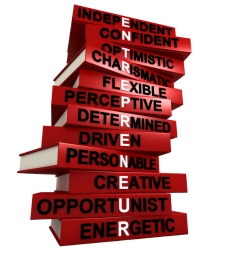14 Feb Playing to win, or playing not to lose?
Anyone who knows me well knows that I am an Olympics fanatic. While my TV usually sits silent, every two years it comes alive nightly for 16 days, confusing my otherwise school-night-electronics-deprived children. I can’t remember what I used to do with my evening hours as I sit glued to the screen; dishes go undone, homework hopefully gets completed on its own, and I walk bleary-eyed to bed way past my usual bedtime.<!–more–>
I’m otherwise not a sports fan at all; I’ll watch the Super Bowl if friends come over, and have a vague interest in the success of home teams. While I am certainly inspired by the physical feats of the athletes, it’s not the sport aspect that draws me to the Olympics. I am intrigued by their stories, commitment, and passion. The idea that someone would work for years with one goal in mind and one chance every four years to accomplish it is simultaneously thrilling and terrifying. The pressure to succeed and the devastation of defeat are both tremendous.
While I couldn’t tell you what the athletes are doing in the off years, I do have a special admiration for the people who return for multiple Olympics. (According to Wikipedia, 488 athletes have attended at least five Olympics, with one Canadian equestrian attending ten.) I greet them like old friends when they appear on my screen, remembering their past performances, and admiring them as they return to put themselves on the line once more. Some of them announced their retirement after the last Olympics, but here they are again, giving it their all. They come despite the doubts, or perhaps because of them, with the additional pressure of either having to live up to their previous triumphs, or redeem themselves for remembered disasters.
So it was with anticipation that I sat down to watch Shaun White – aka the Flying Tomato and preeminent king of snowboarding – as he attempted to acquire his third gold medal in the half pipe event. His first Olympic gold came in 2006 followed by his second in 2010. Now 27 years old, the long locks of red hair are gone and he has a mellower, mature look about him. As expected, he qualified for the finals with the highest score at 95.75. He looked exuberant and determined. And then, to quote a friend, “it all went horribly wrong.” He bombed on the first finals run, catching the edge of his snowboard – and the seat of his pants – on the lip of the half pipe, and coming to a crash at the bottom. Meanwhile, Russian competitor Iouri Podladtchikov, known as I-Pod, scored a 94.75 on his second run, putting him in first place. To get there he performed a move that he invented himself called the “Yolo,” which includes a total of 1440 degrees of rotation – two head-over-heels flips and two 360-degree turns.
The only obstacle between Shaun and the gold, or any medal for that matter, was to match the performance of his qualifying run, a score that was a full point higher than I-Pod’s. It was not to be. His own attempt of the Yolo on the second run landed awkwardly, earning him a score of 90.25, high by most standards but not high enough to even place him on the podium.
It hit me as they replayed each part of his final run: he was competing from a place of having something to lose. I-Pod, never having won any Olympic gold medals before, only had something to win. While Shaun performed in order to hold on to something, I-Pod was creating something entirely new.
There’s that dang law of detachment again. It runs counter to everything we believe abundance to be. Yet there it is: scarcity = holding on, while abundance = letting go. By freeing ourselves of the attachment, we create the space for the abundance we desire. It’s one that often catches me off guard, especially in situations where I really want something to occur. How can I want something and yet remained detached to the result?
I can’t explain how it works, but I know it does. Part of it is getting focused on the creation, not on the result. Part of it is having faith that everything is happening for your good and that if it doesn’t happen, it wasn’t yours to have. How can someone work four years towards one goal and then in the moment that it’s happening, let it go? It’s a lifelong practice, knowing that you are in the right place for you in this moment and are heading to your true place.
Shaun’s gold medal miss all the more ironic knowing that the trick he tried to perform in order to beat I-Pod was the Yolo, which stands for “You Only Live Once.”
 Have you ever wondered about your own strengths and weaknesses as the “CEO” of your business? I’ve created a quiz that can help you gain insights into your leadership style and areas for growth. It’s a fun way to reflect on your skills and discover opportunities for development. Take the quiz and unlock your CEO potential today! Click here to take the quiz.
Have you ever wondered about your own strengths and weaknesses as the “CEO” of your business? I’ve created a quiz that can help you gain insights into your leadership style and areas for growth. It’s a fun way to reflect on your skills and discover opportunities for development. Take the quiz and unlock your CEO potential today! Click here to take the quiz.


